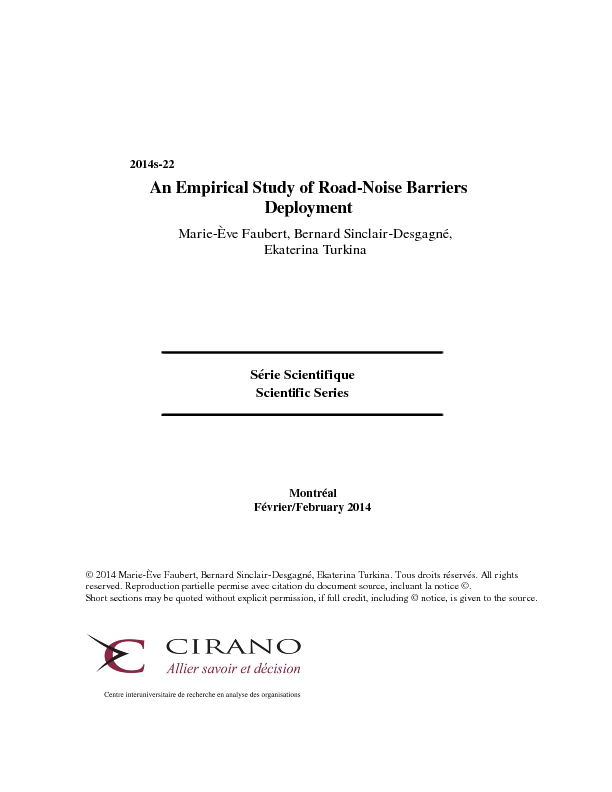An Empirical Study of Road-Noise Barriers Deployment
We investigate the main drivers for the construction of new road-noise barriers across states in the United States. The respective influence of costs, the number of metropolitan areas and registered vehicles, state population density, the already built area, and a state's environmental efforts (as measured by an environmental index) remains qualitatively the same for the overall newly-built area and when only new areas using specific materials are considered. However, history (through the already built area) may foster the use of some materials, which suggests that their deployment is subject to path-dependency; and different environmental indices and states peculiarities matter for different materials, which may indicate regional specificities in landscape and taste or the influence of local industrial lobbies. Some implications for the measurement of environmental stringency and the study of environmental federalism are briefly discussed.
[ - ]




